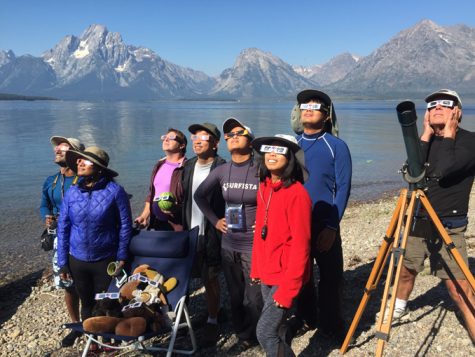Former La Voz Editor from late 1960s reminisces

You walk into a cigarette smoke-filled room at 8 a.m. to get started on the arduous process of editing article after article. Time passes and the next thing you know it’s 3 a.m. the next day and you’re walking down the street carrying a stack of handwritten newspaper layouts to go print using melting hot led.
This was the average editing days of former De Anza College editor-in-chief, Mary Donahue and her now husband, copy editor Alan Ahlstrand from the years 1969 to 1971, who both had the chance to experience a similar, yet completely different environment in the De Anza newsroom that we know today.
“Smoking was legal back then. There would be times when working so many hours straight, there would be a fog of cigarette smoke that someone would say ‘you know maybe we should open a window in here,” said Ahlstrand.
These hours were filled with the tedious task of laying out the school newspaper by physically drawing in boxes and to use hot lead for the actual articles and columns that were being written old school bulky typewriters.
These times of little to no electronic technology made Donahue and Ahlstrand’s lives as editors fascinating. Walking to the printing press down the street at 4 a.m. with a pile of newspapers to be printed is definitely a good excuse when talking with a curious police officer.
Apart from the actual printing itself, the stories being ran heavily reflected the time period. One ongoing event, if not the most prominent in Donahue and Ahlstrand’s time editing for the paper was the Vietnam war.
“We were writing articles about how to behave when you go to the draft board. You could be old enough to be drafted, but you couldn’t vote,” said Donahue. The whole controversy in that time was how politicians were making decisions on students lives while these same students had no say whatsoever.
It was for that reason that Donahue herself fought to get the 18 year old vote.
The focus was heavily on the students who faced the danger of getting drafted for one of the most controversial wars in history. Unity was important as Ahlstrand recalled times of protest. Students came together, after being informed about the conflict around them, to make a change.
Both Donahue and Ahlstrand continue striving to make a change in the world by taking all the skills from their experience in the De Anza newsroom. “You’re going to get leadership and management skills that will apply to so many other things,” said Donahue.
Even for people who don’t consider journalism to be important to their profession, it’s an experience that will prepare you for anything. “There so many people who don’t realize, that you have to be able to write in just about any job you go into and you have to be able to stand in front of people and ‘speechify’, ” said Donahue.
From lifeguarding, swimming escorts, to health classes in CPR, to even swimming classes, they are as involved in their community as possible.
Donahue currently teaches many health and swimming classes at De Anza today while Ahlstrand is an on campus volunteer who assists with the classes. You can find information about her classes as well as several other outdoor activities that they offer to teach off campus on her website: https://marydonahue.org/

Christian has been with La Voz News for more than year, starting of as a reporter last Fall for two quarters, back to back, before taking on news editor...


